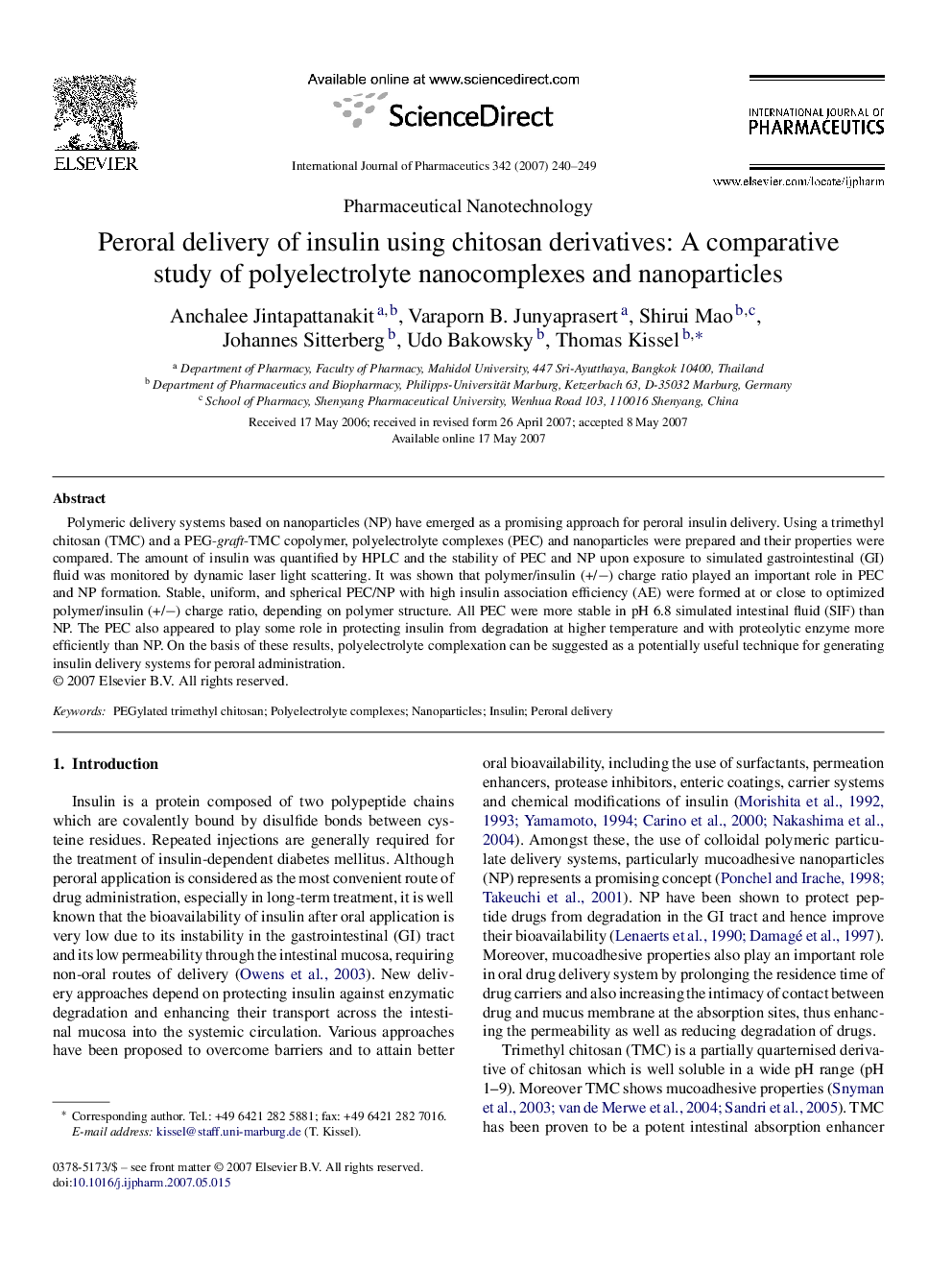| Article ID | Journal | Published Year | Pages | File Type |
|---|---|---|---|---|
| 2505964 | International Journal of Pharmaceutics | 2007 | 10 Pages |
Polymeric delivery systems based on nanoparticles (NP) have emerged as a promising approach for peroral insulin delivery. Using a trimethyl chitosan (TMC) and a PEG-graft-TMC copolymer, polyelectrolyte complexes (PEC) and nanoparticles were prepared and their properties were compared. The amount of insulin was quantified by HPLC and the stability of PEC and NP upon exposure to simulated gastrointestinal (GI) fluid was monitored by dynamic laser light scattering. It was shown that polymer/insulin (+/−) charge ratio played an important role in PEC and NP formation. Stable, uniform, and spherical PEC/NP with high insulin association efficiency (AE) were formed at or close to optimized polymer/insulin (+/−) charge ratio, depending on polymer structure. All PEC were more stable in pH 6.8 simulated intestinal fluid (SIF) than NP. The PEC also appeared to play some role in protecting insulin from degradation at higher temperature and with proteolytic enzyme more efficiently than NP. On the basis of these results, polyelectrolyte complexation can be suggested as a potentially useful technique for generating insulin delivery systems for peroral administration.
